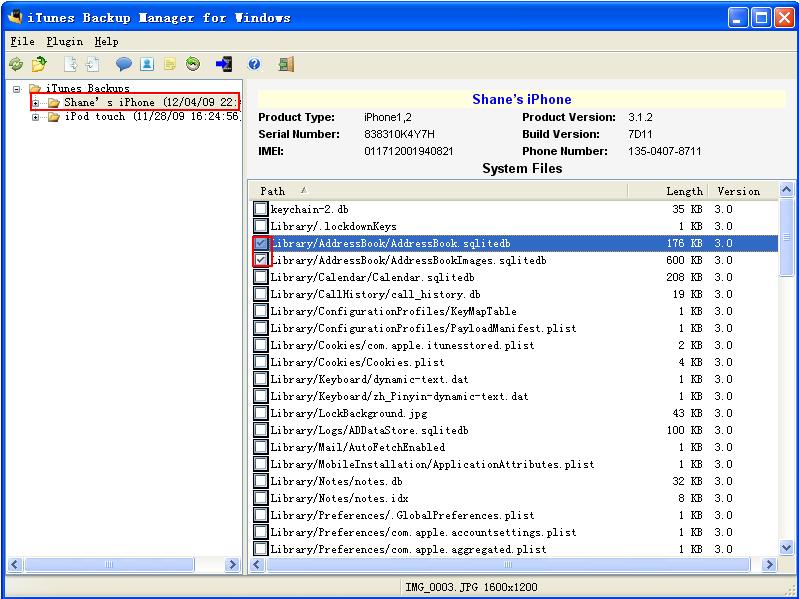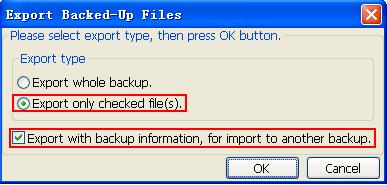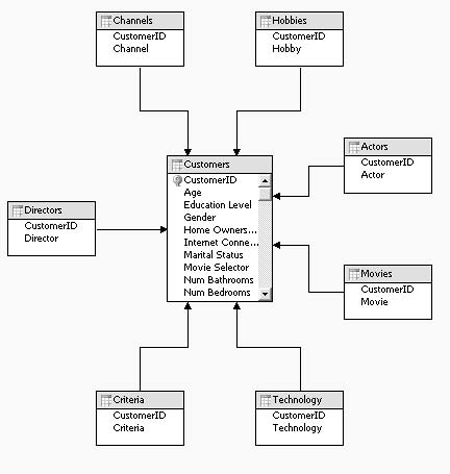引英法联军进入圆明园的,就是写“落红不是无情物,化作春泥更护花”的号称清朝最
伟大诗人的龚自珍的亲儿子龚橙,也叫龚半伦。
李清照的丈夫是中暑死的。
一休和尚很风流,80岁了还和妓女厮混。
中国皇帝貌似有个特别喜欢兽交的,野史里有提到过,没记错的话应该是汉灵帝。
妲己后来没有被杀死,而是被周武王的弟弟周公旦纳为姬妾。
英法联军进圆明园时,发现有个库里装满了先进火器火枪,都快霉烂了,都是康熙前后
外国进贡的,比联军武器好多了……而古时秦国的武器都是标准化生产的,不仅刻有生
产者名字以便追究质量责任,而且零部件都可以通用,在战场上可以迅速把几件折损的
武器拼装成……变型金刚。
东汉有个太监,凭借为皇后诬陷其他嫔妃上位,皇后死后,他立即又傍上了另一个皇后
,简直就是个皇后控。这个人政治上的作为不堪入目。他叫蔡伦,发明了造纸术。
彼得大帝有2米02高,算不算出乎意料。
茶叶刚到外国的时候,洋人煮好后把茶汁倒掉,然后用盐啊胡椒粉啊之类的把茶渣拌着
吃,嗯,挺好的一盘老虎菜。
话说唐中宗李显是历史上最牛X的皇帝。这是为什么呢?因为他自己是皇帝,父亲是皇
帝,弟弟是皇帝,儿子是皇帝,侄子是皇帝,更要命的是他妈也是皇帝,于是历史给了
他一个很光耀的名字:六位帝皇丸。
历史上有一个女人伺候了六个皇帝,包括杨坚(要不就是他儿子),窦建德(他曾经短
暂称帝,后来被灭了),还有辽国的父子俩,然后她在接近六十岁的时候又嫁给了李世
民,另外一个皇帝不知道是谁,此女的姓名我也忘了,也百度不到。
逼死楚霸王的韩信死时被关在笼子里,笼子外面蒙上布,然后一群女人用竹枪捅死了他
。
德军在二战前发现一本书(《未来的陆军》),讲述如何以机械化部队进行机动作战,
德军据此建立了庞大的装甲军团,仅仅用了6个星期就打败了法国,这本书的作者就是
后来的法国总统——戴高乐。
罗马城曾被自己的皇帝下令烧毁,原因是他想看着焰火吟诗,这个皇帝叫尼禄。
陈世美确有其人,但是人家是忠臣,人家夫妻感情好得很呢。陈是湖北人,有个老乡想
找他开个后门,但被陈正直的拒绝了,于是这个老乡很阴险的写了陈世美抛妻弃子的一
出戏,还到处演,这样一传十,十传百,硬是把个好人污蔑成了个历史罪人,真冤。
"存天理灭人欲"那位大学士朱熹喜欢自掘坟墓,曾经把自己儿媳妇的肚子搞大。
发明交流电的尼古拉·特斯拉,这一位可与达芬奇并称的举世天才一直受到大资本家(
包括爱迪生的通用公司)的打压,因为他的天才损害了大资本家的利益,去世后大部分
资料被FBI销毁。
爱迪生人品极差,道德及其败坏,看来才华与人品无一毛关系。
隋炀帝是历史上相貌最出众的皇帝。
隋炀帝在扬州时,励精图治,安一方黎民。当上皇帝后,开凿大运河,是中国历史的创
举。另外,杨广文学天赋极高,可以搜一下他写的诗,大气非常。历史记载:杨广“善
属文”。“炀”是李渊给杨广的谥号,改朝换代后,后朝人给前朝的嗜好,是不可信的
。由于李世民老爸是隋朝的旧臣,夺取了人家的王位有点理亏,所以后来掌握了话语权
的李世民就在写隋史的时候给隋炀帝彻底颠覆成了现在的形象。
李煜是狂热的佛教徒,和他那貌美如花的小周后没事就爱躲清凉山拜佛,他俩叩头叩得
脑门上都起了一层厚厚的老茧。
白蛇传里的小青是个男的,我们小时候都被新白娘子传奇给忽悠了。
牛顿在26岁以前就几乎完成了他在物理界的所有发现……剩下的人生都玩命的在黄铜里
炼金子,还有膜拜上帝。
中国曾经有外籍太监,有一个韩国(高丽)的,叫朴不花。
屈原不姓屈,姓芈(mǐ)姓,他的后代也不姓屈,姓熊。之所以管他叫屈原,是因为
他死的屈,呵呵~
屈原是gay,他爱的是楚王,失意悲伤是因为楚王变心……第一个提出屈原是gay的不是
腐女或同志,而是国学家孙次舟,他的观点得到了著名文学家朱自清和闻一多的公开支
持。
郑板桥是gay倒是他自己在自传中明目张胆说的。
补充下郑板桥。这老兄爱帅哥爱得在当县官时,看到帅哥犯人们都心疼的不得了,不得
不施刑时,他难过得掉泪……以至他提出建议废掉打板子的刑罚,因为实在受不了眼睁
睁的看着打帅哥PP……
在性向方面貌似古代是比现代要开放多了,去翻翻《聊斋》《阅微草堂笔记》或《世说
新语》,那里面“好臀风”三字出现概率不低哟。
历史上的帝王很多都双的,娈童是个很流行的东东,春哥估计在当时不会太吃香。
去看西汉史,人家10个皇帝8个是双。
汉武帝也是男女通吃,至于其男宠,韩嫣韩说俩兄弟和李延年基本上是肯定的了,卫青
霍去病只能说可能性很大,但汉武帝的墓旁边紧挨着就是卫青的墓,连皇后都靠边站,
没她的份。还有据说那个金日磾的小儿子也很得刘彻的宠,汉朝啊,天子都爱好男色了
,就别指望下面能保持正统。汉哀帝和懂贤都是家喻户晓的……表少见多怪,据说黄帝
就娈童,大家都有好传统。
何止帝王和有钱人,过去的书童在伴随主人赶考的路程里,除了要照顾主人的食宿,背
行李外都要陪寝解决主人的生理问题的,那时的小书童身兼多职,特别是来自福建等地
的特别抢手(没有说福建人坏话的意思)............
郭沫若比较开放,跟人道歉的方式很特别,就是亲嘴(胡适被他亲过, 我汗)。
汪精卫是个大才子,听说还是个大。帅。哥。
西方妓女的起源是圣女,最早是供奉在庙里面,通过OOXX来启发信徒的神性的。也就是
说,有人迷惑了,想去接近神,就去跟庙里的圣女OOXX,在high的那一刻接近神,所以
维纳斯最早是妓女之神,后来演变成为爱与美的女神。西方科学家也说男人high的那几
秒,大脑空白,最接近神。
也有人说上面这个观点正好说反了,罗马的维纳斯——从希腊的阿弗洛狄德(Aphrodite
)演化来,是爱和美的女神。希腊那会,爱和美嘛,代表女性最高最真的自由,是独立
的追求自己的爱情和生活的化身,于是沿着——自由的爱情——自由的性爱——自由的
性——自由的妓女…………演化过去了。于是很多没有丈夫保护or不要丈夫的自由女性
,生活在神庙周围,并祈求她的保佑,最后,她也变成的妓女的保护神。毕竟那个年代
,女人没有父亲和丈夫的保护,想要独立生活,恐怕也只有那啥了……
提到维纳斯,顺便说一下,中国古代的妓女也供神位,这位大神就是管仲,因为他第一
个开设官妓,让妓院国有化、规范化。
非洲的卢旺达在1994年发生胡图族和图西族的种族仇杀,3个月内死亡100万人,大多数
被切香蕉的大砍刀砍死。这种大砍刀是中国制造,一块钱2把。(不知道货币单位是法
郎还是美元)。
列宁死于梅毒并发症。
据说舒伯特是嫖妓得了梅毒才英年早逝的,得过梅毒的其他名人还有贝多芬,尼采,哥
伦布,林肯等等。
莫扎特也很惊恐。首先,他很喜欢大便,他给父亲,情人的信里不断出现“大便 真好
吃”“再见,保重,要拉屎在床上喔。”之类的话,他在给堂妹的一封信中写道:“哦
,我的屁股像火在烧!……也许是有粪便要出来了!……那是什么?—— 也许是……
哦,天哪!……我怎能相信自己的耳朵呢?是的,的确是这样——多么长,多么另人忧
伤的一声响!……我把我的尿拉在你的鼻子上,它会往下流,一直流到你的嘴巴里……
你还爱我吗?” 他的书简集里一共出现了关于大便的字眼100多处……第二,他很喜欢
梅毒。他得了梅毒之后很兴奋地写日记“我得了梅毒!终于…真的是梅毒!不是不屑一
顾的淋病、菜花之类的。是梅毒,弗朗西斯一世就是死于梅毒,雄伟的梅毒,纯粹简单
、优美的梅毒……我得了梅毒,我觉得很骄傲,去他的布尔乔亚,哈利路亚我得了梅毒
!”
文成公主是松赞干布的小老婆。
小乔也不是周瑜的正妻,只是一名妾室。
张飞其实是帅哥,书法写的好,还擅长画美女图,其书画作品均属上乘,是一位具有文
士素养和气质的武将。他的两个女儿都当了皇后,史称大小张后,估计这两个姑娘基因
不错,如果丑的话刘禅会要么。
据说康熙小时候出过天花,是个麻子,而且他只有一米五几。
乾隆很操蛋,中华文化在他手里差点毁光了,修四库全书毁书甚于修书,不符合满清统
治的书籍全部毁掉,还删改剩下书籍里的文字。此人在文物字画上乱扣自己的图章,在
上面乱写乱画搞破坏,文字狱在他那个时代到达了变态的地步,红楼梦没有完本也跟这
个有关系。现在的影视剧居然还把这个家伙描述成风流倜傥的明君,开国际玩笑。
乾隆也是一米五。
欧洲人有一段时间以得肺结核为时尚,有些人主动去得肺结核。18世纪时,流行大裙撑
紧身衣,为了美,节食挨冻,就得肺炎,肺结核。那个时候欧洲人的平均寿命 35岁~~~
还有那彪悍的审美观啊,忘了几世纪的时候,欧洲女人算白了吧,可为了追求更高境界
的苍白,居然吃起了砒霜,吃过量中毒死翘翘的人都有,可还是挡不住她们为了死人脸
色继续吃的愿望。非但吃砒霜,她们还在化妆上下功夫,怎么个画法呢,先把脸涂白,
然后再在脸上画些淡淡的血管,因为只有皮肤白到一定境界的人,才能看出血管来。
大禹治水的时候三年过家门而不入,但在台桑遇到了涂山氏,俩人一夜情,涂山氏就怀
孕了,生了一个小孩,就是夏代的创立者启。
东汉三国时代的孔融,是孔子的嫡传二十世孙。可他居然说过:“亲爹有啥可孝敬的,
当时他不过是为了解决自己的性欲罢了;亲娘也没啥特别的,不过是个装东西瓶子,东
西出来了,跟那个瓶子还有啥关系?”——你能想到他就是七岁让梨的那孩子吗?
大奸臣严嵩一手提拔的张居正,张居正是吃伟哥(海狗肾)吃死的,伟哥是戚继光送的
。
杀人狂,排名不分先后
毛XX(跨省勿追)
成吉思汗
秦朝大将白起
希特勒
思达林
朱元璋
蒋sir
东条英机
威廉一世........
纪晓岚其实挺欣赏和珅的,因为和珅有他年青时的影子,正史里和珅是1750年生,比纪
晓岚小26岁,比乾隆小39岁。现在的狗血电视剧太糟蹋人,和中堂当年是美男子一枚,
倒是纪昀,那叫一个……淫荡。有记录,纪晓岚日御女六次……注意,是六个不同的时
段,早中晚加下午茶宵夜……
孙国父是革命先驱,但很少有人知道他是黑帮大佬中的大佬。而且他是个罗莉控,专门
X小MM,快30岁了在日本找罗莉女仆玩……他自己也说,他一生最大的爱好是政治和女
人。近代史很好查,百度一下就知道了,超惊悚。
有个古人为抢侄子的一句诗把侄子杀了。这家伙就是唐朝的宋之问,他以五言诗出名,
想要霸占亲舅侄刘希夷的“年年岁岁花相似,岁岁年年人不同”,强索不成,起了杀心
,杀人手法很诡异,好像是把大土坨装袋压在小正太胸口上,压了一晚上给压死了……
《全唐诗》里记载的,真是极品啊。
还是这一位宋之问,曾向武则天进言,称自己可以做她的入幕之宾 ,武则天嫌他口臭
,顾左言它,没有答应。入幕之宾既是面首,面首既是……呃,男宠。
罗马教廷里有一位教皇,忘了是Pope Leo IX 还是V了,非常喜欢小男孩。他生日的时
候会让精心挑选的漂亮正太裸体叠成蛋糕状,为他唱生日赞歌。唱完之后所有的小男孩
都要跟教皇OOXX,但是不要以为 OOXX之后正太们就可以靠教皇飞黄腾达了,教皇很狠
的,玩过了就杀死。what a facking bastard……
按规定教皇必须是男的,但历史上曾经出现过一位女教皇,她一直以男人身份出现,本
来是不会被发现的。但是一天她外出巡视,路中突然腹痛,当众生下了孩子。秘密终于
被揭开,可怜那个女的好像当场被乱石砸死了。第一次听到的时候蛮震惊的,据说后来
为了防止此类事件的产生,教皇的登基仪式上有个程序就是安排某位主教摸一下教皇的
下身,以辨真伪,汗。
历史上传说怕老婆的人:伍子胥,隋文帝杨坚,唐中宗李显(就那六味地黄丸),房玄
龄,戚继光,胡适,常遇春,索额图。
张作霖每天早上喝一碗虎血。
陈阿娇是拉拉,这个典故和金屋藏娇一样可信,全部出自《汉武故事》。恐怕还是第一
对有史可寻的拉拉……
(【建元六年。太皇太后崩,上始亲政事,好祀鬼神,谋议征伐。长主自伐滋甚,每有
所求,上不复与,长主怨望,愈出丑言。上怒,欲废皇后,曰:“微长公主弗及此,忘
德弗祥,且容之。”乃止。然皇后宠送衰,骄妒滋甚。女巫楚服,自言有术能令上意回
。昼夜祭祀,合药服之。巫著男子衣冠帧带,素与皇后寝居,相爱若夫妇。上闻,穷治
侍御巫与后。诸妖蛊咒咀,女而男淫,皆伏事。】
三菱集团的前身——龟山社,其最初的创始资金是坂本龙马靠把小弟丢给女富豪当男宠
借来的,那个小弟就是后来打败清国废除日本对外不平等条约的名臣陆奥宗光。
三国后的南北朝时代有个皇帝的书童领兵8000,从现在的南京出发,一路打下长安、洛
阳70座城池,击败当时北魏的50多万大军,他叫陈庆之 。
郭沫若是个不折不扣的斯文败类,寻花问柳,到处留精。
禅让。李白都公开支持:尧幽囚,舜野死。(尧被舜关起来到死,舜被禹流放到九嶷山
……)。
魏晋风范,也不是传说中的那么迷人。这帮文人不穿衣服,是因为他们天天炼丹药,吃
丹药,体温比常人高、皮肤比常人敏感,当时的纺织物容易磨破皮肤……魏晋上层人物
都不爱洗澡,在自己身上养虱子,然后捉来吃……这是当时非常时髦的做法。那个时候
的丹药富含各种有毒物质,所以大多文人长期处在迷幻状态中。所谓魏晋风范,什么裸
奔、喝酒、大哭……就是一帮古人,天天嗑药磕H了头,跟现在的瘾君子没两样。
鲁迅曾在一篇《魏晋风度及文章与药及酒之关系》的文章里提过,那些人吃的叫“五石
散”,是何晏开始吃的。五石散影响了魏晋的衣食住行乃至社会风气。吃了五石散之后
,全身发烧,发烧之后又发冷。因为皮肉发烧,不能穿窄衣。为预防皮肤被衣服擦伤,
就非穿宽大的衣服不可。因皮肤容易磨破。穿鞋不方便,所以不穿鞋袜而穿屐。更因皮
肤容易破,不适穿新衣而宜于穿旧衣,衣服不能常洗。因不洗,便多有虱子。所以在文
章上,虱子的地位很高,“扪虱而谈”,当时竟传为美事。
鲁迅是文豪没有错。不过他很善于理财,不准别人拖欠稿费,锱铢必较。有次林语堂为
一个出版社说了两句好话,鲁大概表现很冲动, 林语堂就在日记里写:此人已成神经
病。
被鲁迅骂过得很多文人在日本人来了之后表现的很刚烈,比如那位女师大校长,而鲁迅
的很多左翼盟友们都做高官去了。
大家都知道杨荫郁吧,就是在《纪念刘和珍君》一文中被鲁迅骂的女师大校长,她后来
为了给被日本兵奸污的中国女学生出头,找日军理论(杨女士日文很好),开始把日兵
震了,后来知悉她身份,把她打死后推入河中,大冬天哦。(俺看到这段就觉得课本上
应该替她辩白几句的,这怎么说都是烈士 )。貌似她还是钱钟书老婆杨绛女士的姑妈
,杨绛写文章纪念她的时候隐藏的开涮下鲁迅。刘和珍那件事是杨荫瑜的治校观念不合
左翼胃口,当时很多负责任的教育家也不赞同让学生过多投入政治纠纷去当政治炮灰的
,本人也不赞同拉着同学赤手空拳去请愿,杨荫瑜管理是很严厉,可这样就定性为奴化
教育封建教育了?是不是全校被封或者大家都听课闹革命才合“进步人士”的胃口啊!
!?在这件事情上李四光倒为杨荫瑜说过公道话,结果有人说李四光和杨荫瑜私交不错
,说话作不得数。那鲁迅还与事件另一方当事人之一关系暧昧呢,许广平就是在这件事
后借机搬入鲁家与他同居的。鲁迅还写过《寡妇主义》挖苦杨荫瑜,拿杨的不幸婚姻经
历作话柄,最要命的是根据里面“寡妇”或“拟寡妇”的定义,他那个倒霉妻子朱安也
在其中。真觉得这人失德的可以。
司马相如后来还是负了卓文君。
马克思和家里女仆(好像就是他老婆的陪嫁丫头)有个私生子。女仆怀上了之后,老马
怕老婆发飙,就写信向恩格斯求救,老恩就把这黑锅顶了下来,现在那个啥博物还有这
封信。这不是最雷的,最天雷的是小时候思想品德课外教材有篇说马克思尊重劳动人民
,很听这位女仆的话,当然,没说他俩有一腿。
嘉庆皇帝是被雷劈死的。
有人考证说禅让都是假的,下面有个case:
马王堆三号墓出了一个帛书,上面有汉朝时候黄帝战蚩尤的记载,翻译后是这样的:
黄帝把蚩尤抓住了,让人剥下蚩尤的皮做成靶子,让大家射;剪下蚩尤的头发挂在
天上,叫“蚩尤旗”。黄帝又把蚩尤的胃填满干草做成一个球让大家踢,能用脚颠球最
久的人得奖赏(黄帝说要有足球,足球就出现了)。黄帝还把蚩尤的骨肉做成肉酱,混
合到苦菜酱里,命令所有的人都来分吃。黄帝颁布禁令,说:禁止触犯我的禁令,禁止
不吃我分给你们的人肉酱,禁止扰乱我的民心,禁止不按我的路子办。如果触犯禁令,
如果偷偷倒掉人肉酱,如果扰乱民心,如果不听我的话,如果不收规矩时限,如果知错
犯错,如果越过界限,如果私自改动制度让自己快活,如果你想怎样就怎样,如果我还
没颁布命令而擅自用兵,看看蚩尤的下场:他俯首做奴隶,他得吃自己的粪便,他求生
不得不死不能,在地底下给我做垫脚石!以上,记录下来以示后人。
因为描写太华丽,这一段文字在历史上抹掉了,我满脑子都是恒河的场面,买糕的。
中国历史上唯一掉进粪坑呛死的国君是春秋的晋景公姬獳。(这位大叔死的,简直太狗
血了,哈哈,没想到算卦先生算的如此之准——您老,吃不上今年产的新麦子。景公不
信,来,把那丫挺的算命先生扔小号里去,老子今年非吃到新麦子不可,靠!…………
新麦子收割了,给景公做好了饭,景公得意——孙子,看到没,今年的新麦子!我能吃
着,你丫吃不着啦!!!哇咔咔……哎,我得先上个厕所! 结果,掉厕所里淹死了,
真没吃到新麦子……)。
第一个打算用火箭把人送向天空的是咱们国家明朝的一个叫万户的人(把自己送向天空
的同时也把自己小命送天堂了),但是咱们国内的历史学家竟然没人说??这个说法还
是人家国外的专家说到人类对太空的探索的时候说到的,会不会是八国联军把我们历史
文献抢跑,然后自己悄悄研究去了??
按照史记的记载,嫪毐(???~前238)的JJ相当强大,可以用来转动桐木车轮。如
此看来,赵姬也是相当的彪悍啊……
60年代的时候,全地球的青年人都在high,中国青年在闹革命,美国青年在吸大麻流浪
滥交。法国和日本的青年打出了向中国人学习的旗号也在闹革命。
革命总是伴随的群P—— 当年从全国各地奔赴延安的青年学生们,在延安大搞思想解放
,摒弃传统的道德体系,开放程度你怎么想都不为过。最平常的事情就是“打游击”,
也就是一个男的碰见一个女的,问一声:“打个游击吧?”女的说:“好吧” 。两人
就钻枣林了。这一传统流传下来, 就是某些人非常喜欢开舞会。
一个曾经见证过轰轰烈烈的某事件的大爷说,那时候,聚集在一起的那帮学生们白天喊
口号,坐着,聊天,晚上就在帐篷里OOXX,大有嬉皮士之风。尤其是有的人会在晚上点
蜡烛弹吉他,那会儿就听见夜空中琴声和呻吟声齐飞,煞是刺激。敢情枪花那都是学咱
们的~~~
《戏梦巴黎》就有这段,华丽丽的老毛头像。
说一个最近的吧,前几天意大利总理在一个欧盟高层会议上很勤奋地沙沙沙地划着什么
,大家都以为他在算计什么,后来那些别的国家的领导人就发现,这孙子竟然在画女人
的内衣,而且丫不仅画,还传阅给其他领导人看(很无语……)。
不过我还是最佩服下面这两位:
第一位就是李白了,
其诗在唐代,甚至在中国历史上都能排在前几名的主儿,
结果又是当时武林高手排行榜第二……还手刃数人……我这颗爱怪蜀黍的罗莉心啊,一
颤一颤的!
只有那句话能形容他,不要迷恋哥,哥只是个传说
文武双全的无双人物,除了李白,数百年之后还有一位
这个人写的东西凡是认字儿的人都听过,但这个人一生的抱负不是去写文章, 而是去
打仗。他年纪轻轻就参军,跟了一个老大混,因为实在是有本事,当了侍卫队长。后来
有一次老大派他带了30个人去送信,他回来一看,傻了……
原来他们队伍出了250,砍了老大的头,投降敌方,整个队伍都已经散了。
这人当时哭了一场,然后领着那30个小弟,纵马冲进有5万敌军的大营,一路砍过去,
不仅抢回了老大头,顺带着还把那个叛徒的头也砍了,30个人毫发无伤的回去了。
不过有本事的人都是遭嫉的,后来他被闲置,抑郁而死。
此人名叫辛弃疾。
那个叛徒名叫张安国,趁辛弃疾前往建康时杀了义军首领,自己带人投降金人。在这次
为老大报仇的行动中,辛弃疾麻损失没有,反倒策反了一万多士兵跟他回到南宋,这买
卖做的,值!!
在这之前,还发生过一件类似的事。一个名叫义端的和尚,被辛弃疾说动投靠义军,不
久后居然也反了,打算投降金军(怎么尽遇上这样的人),辛弃疾亲自追杀他
临死前,义端还拍马屁说辛弃疾你是神兽降世啊,请不要杀我,辛弃疾听完立刻砍下他
的脑袋。你才是神兽,你全家都是神兽。
辛弃疾真是追杀叛徒专业户........






















 Best Practices Recommendations
Best Practices Recommendations 













